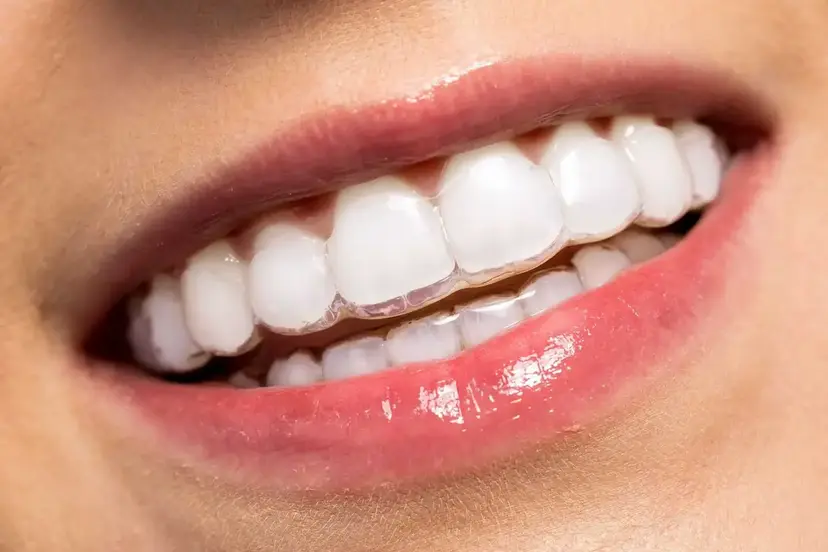MakeO blog
Dental health is a big part of our overall well-being. While we often spend time fretting over pimples and hair fall, it’s vital we don't ignore our teeth. However, have you ever had that moment of sudden panic when you bite into something and feel a strange sensation in your tooth? Whether it's due to a cavity or tooth damage, most of us would be in a dilemma about whether to go for a crown or a filling. But what are they, and how do they differ? Let us break it down for you.
What are dental crowns?
Imagine a helmet for your tooth. That’s essentially what a dental crown is. It's a protective cap placed over a tooth to restore its shape, size, and functionality. Crowns are often used when there's significant decay or a risk of the tooth breaking. Plus, they're designed to look just like your natural teeth.
What are dental fillings?
Now, let's move on to fillings. Picture this: Your tooth has a small hole or cavity. Instead of covering the entire tooth, a dentist will remove the decay and "fill" that hole with a material. That’s called a dental filling. They are simpler than crowns and are usually used for smaller cavities.
Crowns vs Fillings: The Factors That Determine What You Need
1. The extent of the damage
If the tooth damage or tooth decay is minor or moderate, dental fillings can be a great solution. However, if you've got significant decay or if there's a good chance the tooth might break, a crown will be your best option.
2. Location of the tooth
Molar, the ones at the back, experience a lot more pressure when you chew. A crown might be a better choice for these powerhouses as they provide extra strength.
3. Appearance
While modern dental fillings blend quite well with natural teeth, crowns give a more uniform appearance, especially if the tooth is more visible when you smile.
4. Budget
Let’s be real, dental treatments can burn a hole in our pockets. Fillings generally cost less than tooth crowns. So, you might want to consider your budget while making a decision.
Symptoms That Suggest You Need A Dental Crown or Filling
1. Chipped or Broken Teeth
Accidents happen! If you've chipped or broken tooth while munching on hard candies or due to a mishap, it might need a crown to restore its functionality and appearance.
2. Discolouration
A discoloured tooth can be due to various reasons including internal damage or previous procedures. A tooth crown can help in restoring the natural look.
3. Old Fillings
Old, deteriorating tooth fillings can compromise the strength of the tooth. In cases where the filled tooth is weakened, a crown offers additional protection. Additionally, if your tooth is filled multiple times and still shows weakness, it may be time for a tooth crown.
4. Post Root Canal
After a root canal, the root of the tooth is gone, hence dental fillings are not an option. The tooth often needs a crown to prevent it from breaking, especially if it's a molar.
5. Size of the cavity
Since dental fillings and crowns are both used for tooth damage and decay, often, times the size of a cavity is assessed to make a choice between the two. When cavities are caught early on, tooth fillings are more suitable, but if cavities lead to a significant amount of damage, tooth crowns are opted for.
While these symptoms can guide you, they aren't definitive. It’s imperative to visit your dentist for a proper evaluation. Depending on the issue, they will suggest either a dental crown or a filling. It's always better to nip the problem in the bud rather than wait for it to escalate, right?
Conclusion
Both crowns and tooth fillings have their merits. It all boils down to the problem at hand and what suits your needs best. Always remember, your teeth are precious, so take good care of them and ensure you get the right treatment when needed.
One of the simplest ways to avoid having to use both tooth fillings and dental crowns is to keep your oral health at its best. And you can do that by using makeO toothsi’s range of effective products like toothsi electro and toothsi smart water flosser. An electric toothbrush is known to be more effective at cleaning food particles and ridding your mouth of germs and a water flosser can step in for a secondary cleaning. Water flossers are particularly great if you have sensitive teeth, or have dental crowns, braces and more!
In short, make smart additions to your oral care routine if you want to keep away from dental crowns and fillings!
FAQs
How long does a dental crown last compared to a dental filling?
While both treatments are durable, a crown can last anywhere from 5 to 15 years or longer, depending on your oral hygiene. Dental fillings, on the other hand, might need a replacement in about 5 to 12 years.
Is getting a tooth crown more painful than a tooth filling?
Both procedures usually involve numbing the area, so you won't feel pain. You might experience some discomfort afterwards, but that's temporary.
What is a tooth filling made of?
Several materials can be used, including composite resin, amalgam, gold, or ceramic. Your dentist will advise on what's best for your situation.
Crown vs filling: Which one looks more natural?
Modern dental practices ensure that both fillings and crowns look pretty natural. However, if the affected tooth is at the front, you might prefer a tooth crown for a more seamless appearance.
If I have a cavity, should I directly go for a crown instead of a filling?
Not necessarily. The choice between a crown and filling depends on the extent of the cavity. A minor cavity is generally treated with a tooth filling, but more serious damage requires a dental crown.
related categories
Related articles

Types of Braces: Removable vs Fixed Braces, Which is Right For You?

This Diwali, Smile Bright With makeO Teeth Whitening Kit

Dr. Pravin Shetty: Pioneer in Lingual Orthodontics & Innovative Smile Solutions
How do I Know I’m the Right Candidate for makeO toothsi Teeth Aligners?

